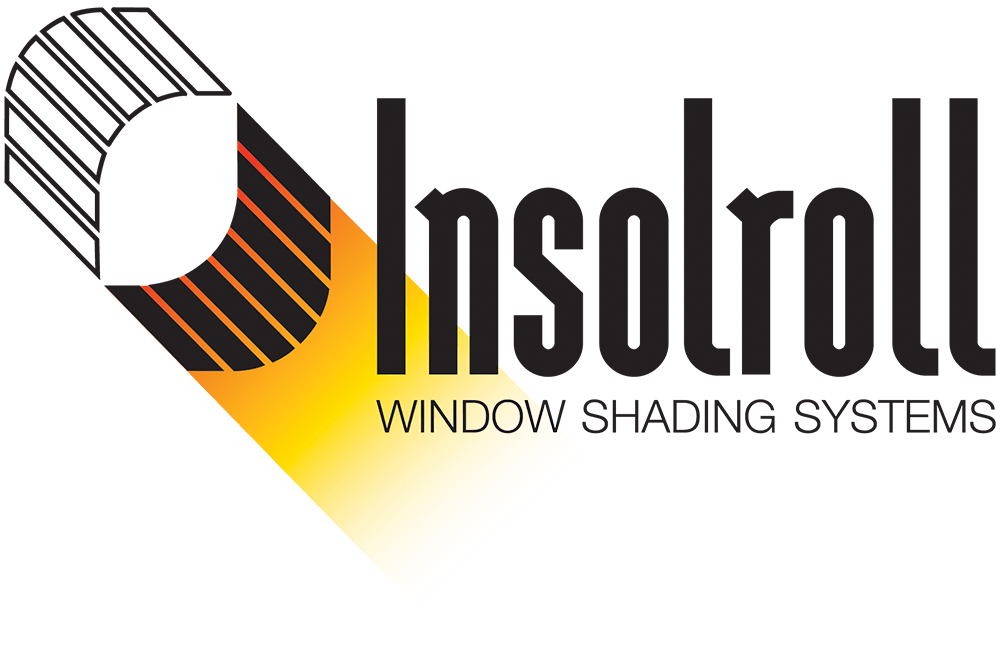
This past week, the weather in Colorado has been wet and rainy… It got me thinking about one of the qualities of solar screen shades that gives them a clear advantage: retractability. Roller shades have a full range of positions on-demand, whether you have manual shades with clutch or spring roller operation, or motorized shades with on-demand user control or even building automation.
Static vs. dynamic glare control
Static glare control
There is always more than one way to skin a cat, as they say, and when it comes to glare control, there are several ways to go about it. Those ways fall into two categories: static glare control and dynamic glare control.
Static glare control methods remain stationary… they stay put, and therein is a disadvantage. Window glass itself can be tinted to control glare by absorbing part of the light energy (and absorbed energy becomes heat, which can invite other problems). It can also be coated with a reflective substance, which allows a prescribed amount of light into the space, but can make the outside of the building look like a mirror. A third method of treating window glass itself is called fritting, which is an application of a ceramic “paint” in a pattern on the outside surface of the glass. Fritting creates an effect similar to what solar screen shades do, in that it stops light from entering where the frits are covering the glass. According to James R. Benya, author of archlighting.com blog, frits “simply reduce the amount of light equal to the ratio of fritted to unfritted surface area”. Generally speaking, I assume that frits seldom cover an area of glass that would be equivalent to even a medium density solar screen fabric.
Other forms of static glare control can be seen in building architecture, from severe limitation of glass on west sides, to overhangs and hard surface awnings. The latter can do a good job of shielding windows from overhead sun at certain times of day. This does not provide glare protection, however, when the sun is at a lower angle, such as during the winter, or at earlier or later times of day. They are also not enough for an east- or west-facing window, and the amount of overhang must be limited in order to avoid creating a cave-like feeling inside the space.
Static glare control methods can only be partial solutions, and do not have the versatility to be a good answer all the time, or for all types of buildings, such as those with a lower ratio of glass on the outside of the building. All static methods of glare control will produce a darker interior on a darker day, requiring increased use of artificial light, and potential adverse effects on the building’s occupants.
Dynamic glare control
Dynamic forms of glare control can be inside or outside the window, and deployed in response to varying conditions, including sun angle, time of day, time of year, and current weather conditions. Operation can be fully automated via scheduling and response to temperature or light conditions, or single user-controlled with either manual or motorized systems. Huge, venetian type blinds can be constructed on the outside of a building, or similarly, a system of operable louvers, but such systems are very expensive, and also often involve some degree of view obstruction.

Solar screen shades are an elegant, dynamic glare control solution. They offer a full range of deployment, from all the way down to all the way up, offering as much or as little control as you wish. On cloudy, dark days, the shades can be fully retracted to achieve as much daylight in the interior as possible. They can be positioned in response to (or in anticipation of!) the sun’s angle, and multiple shades can be placed in various positions to customize the amount of glare control at any given time. Motorization and automation afford the highest level of energy efficiency, and offer myriad options for methods of control. And of course, the very best, most wonderful thing about solar screen shades is that your view is preserved even when they are in the completely down position. In fact, I would say, the view is enhanced, because glare is controlled, so you get to see outside and maintain a connection with nature while enjoying both thermal and visual comfort. Daylighting and view to the outside have been shown to be of measurable benefit to workers, hospital patients, students, and occupants of all types of buildings, from commercial to residential.
A multi-faceted approach for true customization
Solar shades, or perforated shades, can also be an integral part of a multi-faceted solution for many types of buildings, working in concert with one or more types of static glare control. This allows complete customization of light management, accommodating many different factors that may affect a building’s needs. In this type of control scenario, solar screen shades bring aesthetics and design into the interior picture, with a wide variety of fabric colors, weaves and textures to enhance any design scheme. If you’ve got a project coming up, big or small, the more you learn about glare control and energy efficiency, the better prepared you will be to make decisions that will keep you comfortable and save you money.
Learn more about how Insolroll Solar Screen Shades work

